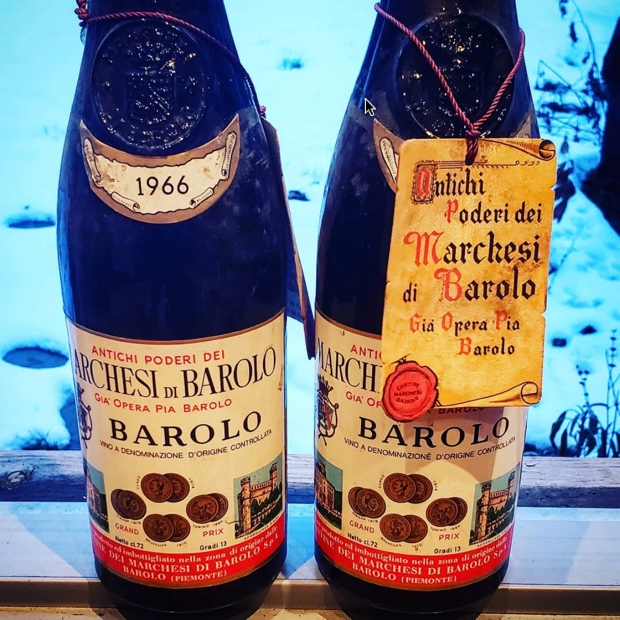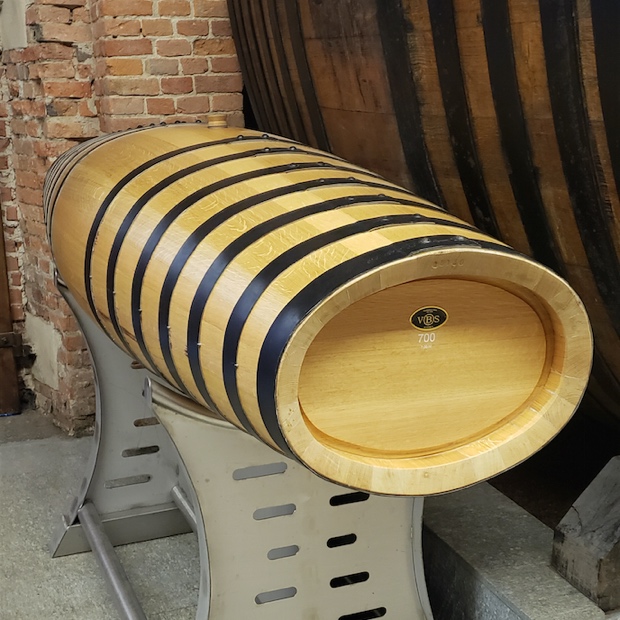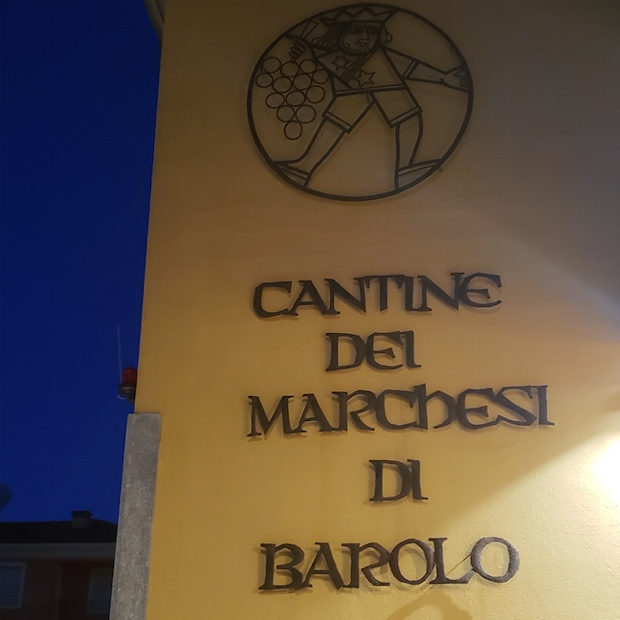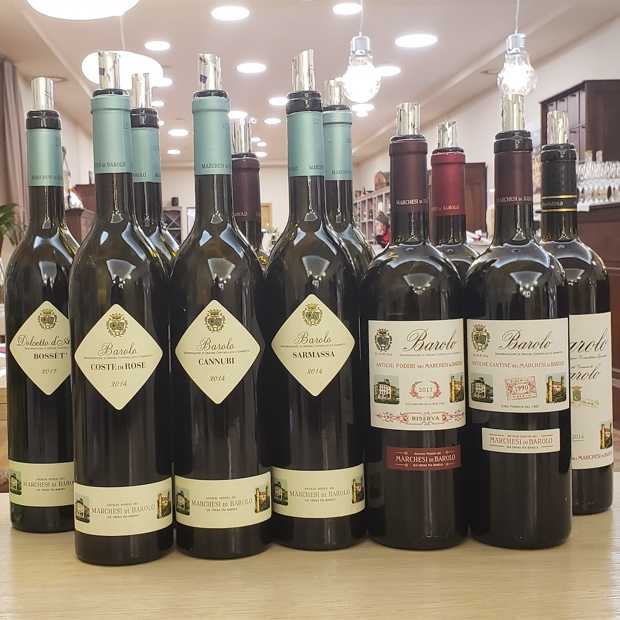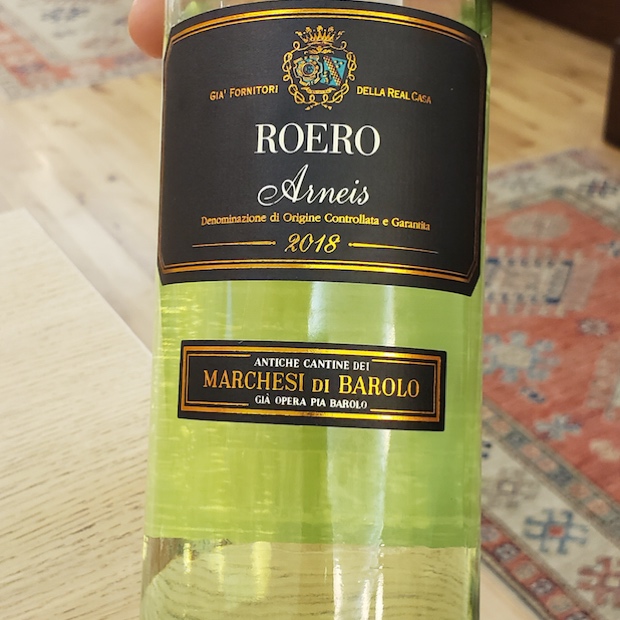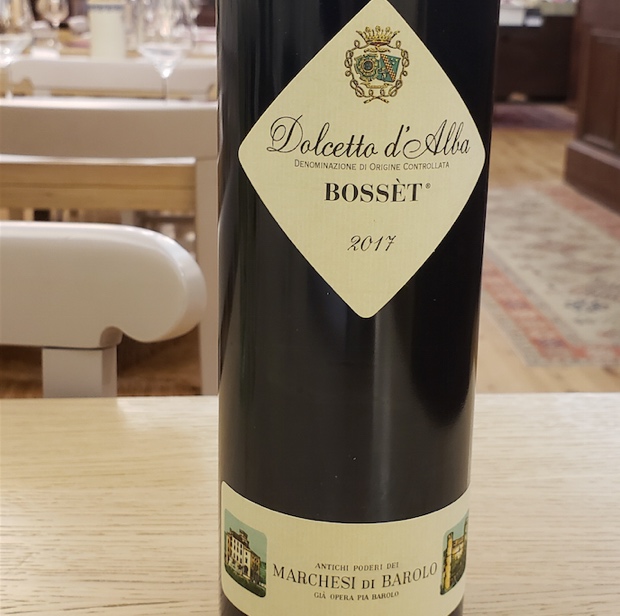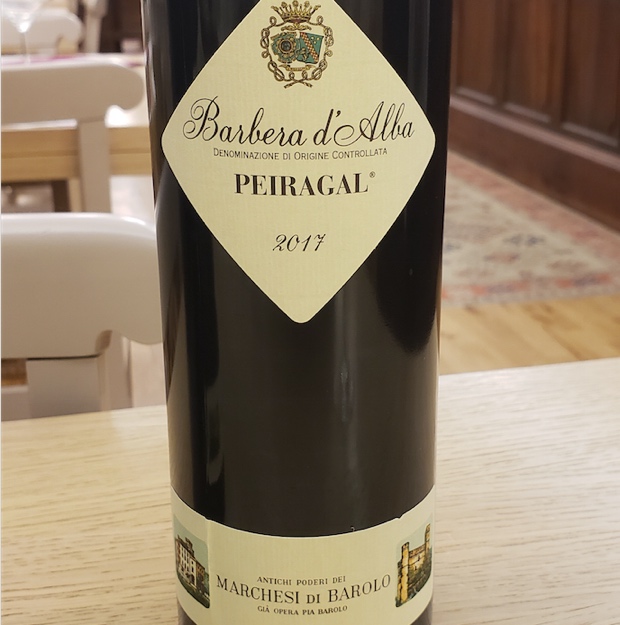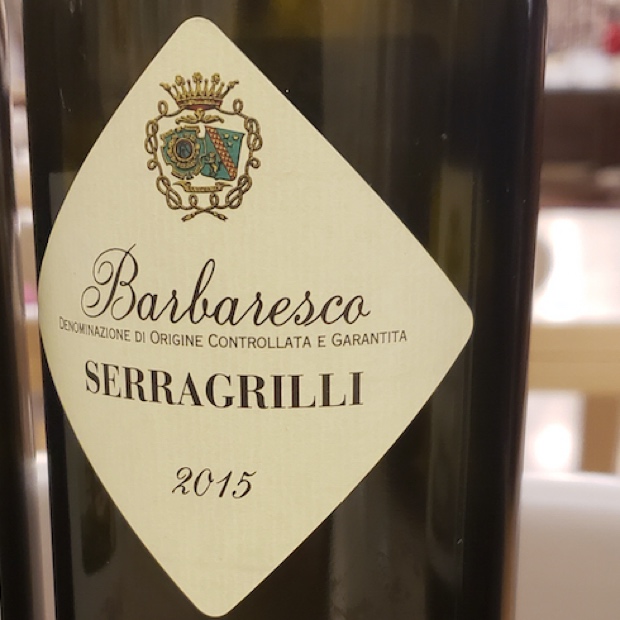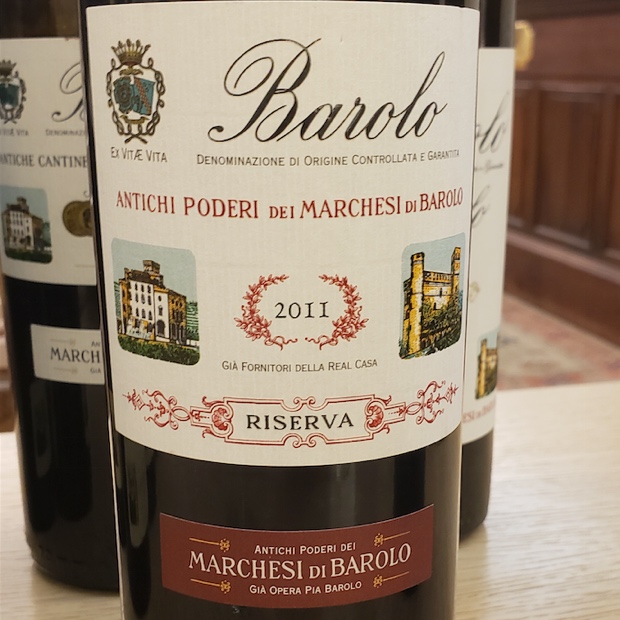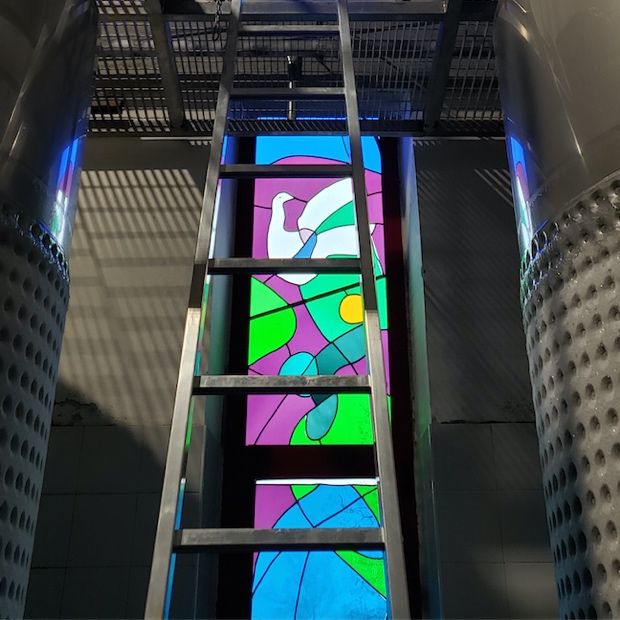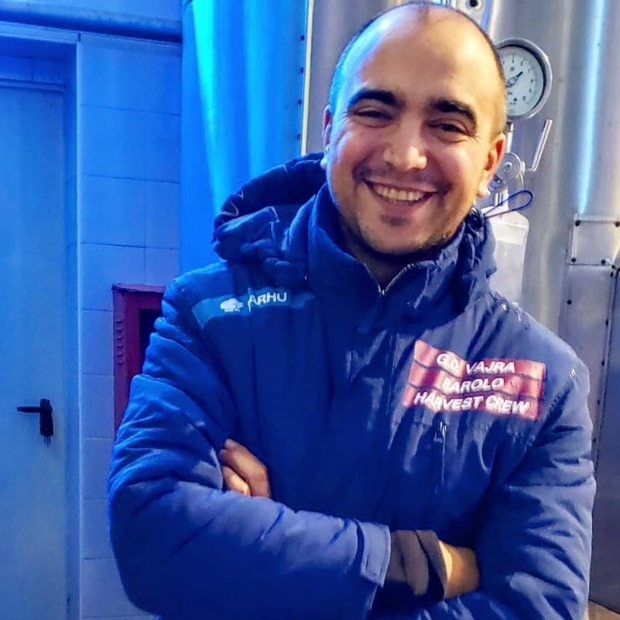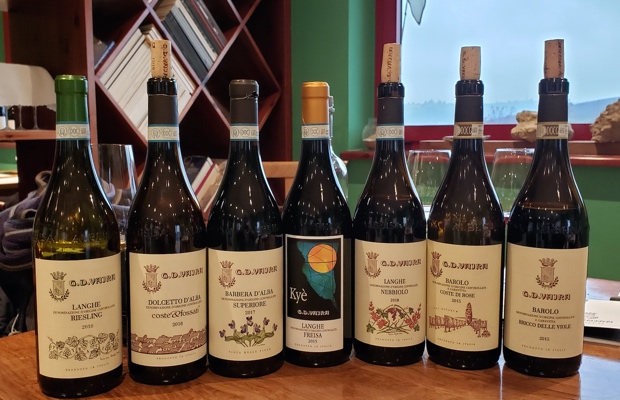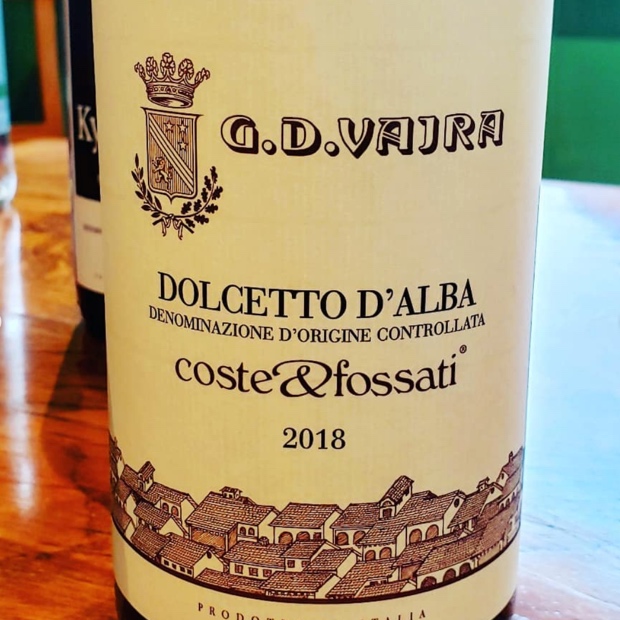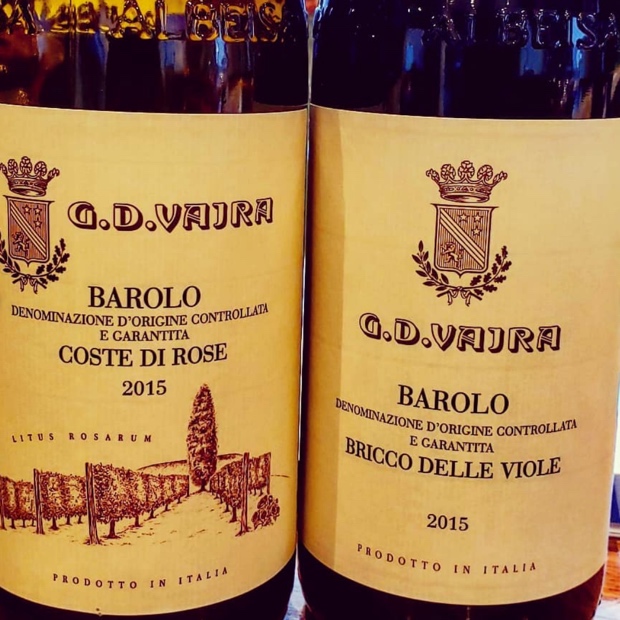Trying to find birth year wines has been a fruitless and frustrating search and I’ve been at it for 20 years. That and the current situation in Italy is one of the major reasons why my December trip to Piemonte was more than successful, it was in fact a sign. On that I’ll get to in a moment because there is something more profound, a sentiment that struck as most significant in the moment and even more so in a retrospective look back. The hospitality and the outright determination to go to extreme lengths for the purpose of making personal connections is what drives the Piedmontese mentality. I made six appointments over three days in advance of that trip and all six producers wrote back saying they would be delighted to receive me though each were compromised by the pulls of events and commitments that would make it difficult to be there when I arrived. After the three-day tour was done, all six had found a way; Barbara Sandrone, Marina Marcarino, Milena, Francesca and Isidoro Vaira, Chiara and Giorgio Boschis, Angelo Gaja, Anna and Valentina Abbona.
Related – Pull up a chair with Angelo Gaja in Barbaresco
I first met the Abbona family in July of 2017. It was Anna Abbona’s birthday and in their dining room that night Ernesto opened a 1958 at the ripe old age of 58 (though it would turn 59 later that year). Simply stated, in the words of the Abbona family, “a special evening, special friends, special vintage.” That is their story, of generosity, open arms and always, love. I don’t really know how they do it, always on and very present, but they do, for everyone, all around the world and especially in their home. As I stood in the cellar on December 1st, 2019 they proved me right again when out of nowhere Valentina appeared, straight from Rome, en route to another pressing appointment, to spend some time talking and sharing the Marchesi di Barolo spirit.
Related – Barolo’s Sister and Brother Boschis
As the incumbent owners of the historic Barolo estate the Abbona family takes their custodianship very seriously. Researching and studying its history and provenance is at the fore of their concern. While running through the ideology of present day elévage we pause to consider such a construct. The “babies” are still fermented in concrete vats but many of the wines now begin their journey in stainless steel. Concrete is used for holding wines going back a few vintages and for those that have already seen their assemblage. Which brings us to the new barrel concept, which is a really quite an old one, dating back to the time of the last Marchesa, Giulia Vittorina Falletti Colbert. The wood of this barrel is modelled like the shape of a river boat or canoe, meant for wine to travel downstream and used exclusively back in the 1800s. The idea of the Botti della Marchesa has been resurrected and is now used for special cuvées.
Related – November 30th in Piemonte: Sandrone and Punset
One more bit of information to share. The Marchesi di Falletti was considered historically to be the first to cultivate nebbiolo at the beginning of the 19th century. In 1895 Pietro Abbona joined his father’s vineyard not far from Barolo Castle and eventually purchased the historic cellars from the Falletti family. Four and five generations later; Ernesto, Anna, Valentina and Davide.
Related – Gone Vajra in Piemonte
The Abbona family has been running the historic cellars of the Marchesi di Barolo since 1929 which means we have entered the decade that will culminate in their 100th anniversary as proprietors of the most important estate. I’ve been to a party in their home and so I can only imagine what that celebration will be like. Long ahead of that event of the century will be the celebration that takes place when Italy and the world are set free from the disaster that has gripped, stymied and ravaged so many families. You can count on the Abbonas to be there when the day arrives, to open their doors and arms, to have loved in the time of and surely to love after the pandemic.
While in the tiny hamlet of Castiglione Falletto I wandered into Le Mura di San Rocco, the Enoteca run by Dario Destefanis. I noted many old vintages but nothing from 1966. I inquired with Dario and he said if I were to come back a day or two later he would pull some from his cellar and procure them for me. I did return and he sold them at the cost of a current vintage. They were ostensibly a gift, from the Marchesi, through the purchaser who stored them for five decades in perfect provenance and then bequeathed them to Dario. The Abbona family had a hand in this transaction, however unknowingly and for that and to them I will always be thankful. The Marchesa and the Marchesi di Falletti. The connection is not lost on me.
So much joy to make a return visit to Marchesi di Barolo in the village of Barolo. To taste so many wines and to be offered the special vintage of 1990. Grazie to the Abbona family and to Laura. Until next time. So many notes and memories are now ready to be shared. These are the lucky 13 wines tasted that day in December.
Marchesi Di Barolo Bric Amiel 2018, Langhe DOC, Piedmont, Italy
A blend of arneis, chardonnay and sauvignon blanc created by siblings Valentina and Davide Abbona. Top of the slope and honey because the Bric is a place where the bees liked to hang around. Only the fourth incarnation of this simple, refreshing and crisp white. Honey will be a part of this zesty lemon and lime wine’s near future. That much I think is guaranteed. Drink 2019-2021. Tasted December 2019
Marchesi Di Barolo Arneis 2018, Roero DOC, Piedmont, Italy
No longer the white to draw the birds away from munching away on the nebbiolo here is arneis richer than many and of a proper mineral equality. There is something peach salty about this direct expression. Impressively seamless in its fruit to acid construct. A well made white of next level proportion. Drink 2019-2021. Tasted December 2019
Marchesi Di Barolo Bossèt 2017, Dolcetto d’Alba DOC, Piedmont, Italy
A dolcetto that combs and brings the best of two worlds, the joy of drinking young and fresh but also a modicum of structure that will make for some added interest in a few years time. That’s noted by the white peppery tone at the back, not wood induced but just the true nature of a grape grown in a specific place. Quite heady for dolcetto with the body of knowable finesse. This dolcetto will win over a whole new category of consumers. They only need to get into the game. Drink 2019-2022. Tasted December 2019
Marchesi Di Barolo Pieragal 2017, Barbera d’Alba DOC, Piedmont, Italy (485904, $40.95)
Planted straight across the road from the winery in a block that was always nebbiolo but financial frugality is not always put first. The game elevated in this barbera is a structural one and also one dictated by weight, but also density. French barriques does the work and the fruit obliges. A swirl of vanilla and dark berries whelm the ease so the indicative ideals say wait and then wait again a while longer. Barbera structured is a specifically splendored thing. Drink 2021-2025. Tasted December 2019
Marchesi Di Barolo Barbaresco Riserva DOCG 2014, Piedmont, Italy
Only Slavonian cask and no French wood for nebbiolo in Barbaresco form. The vineyards are classically parochial “terre bianche,” white calcareous soils so prevalent around the appellation. The fruit is well developed and rustically edgy, a purple fruit compote with some dried elements. One of those wise nebbiolo that has reached an advanced level of it’s ilk and yet is wise enough to know how to pause there going forward for an equally comfortable period of time. Drink 2019-2025. Tasted December 2019
Marchesi Di Barolo Barbaresco DOCG Serragrilli 2018, Piedmont, Italy
Serragrilli is the fresher and more approachable nebbiolo in Barbaresco clothing with easier tannins and yet still the classicism of Barbaresco ability. A note of liquorice and tar, plus the roses (candied and dried) of nebbiolo fame. Drink 2020-2023. Tasted December 2019
Marchesi Di Barolo La Tradizione Barolo DOCG 2015, Piedmont, Italy (168179, $43.95)
The most generous nebbiolo from arguably the more generous of vintages is all about fruit, in ability, compatibility and respectability. Fully ripened in two respects with intoxicating phenols stealing the proverbial aromatic show. Perfectly reasoned, seasoned and effectuated nebbiolo. Drink 2021-2026. Tasted December 2019
Marchesi Di Barolo Barolo DOCG Del Comune Di Barolo 2014, Piedmont, Italy ($72.00)
A return to some thoughts that make us think of older ways and remind of tradition that can never be forgotten. That’s the savoury quality of this cool vintage Barolo, a nebbiolo that speaks a truth many have left for dead. You can count on the Abbona family to let a vintage and its vineyard fruit talk the talk of a vernacular that can’t help but be uttered. Wild and shearing acids keep the fruit at bay, with laurel and whey, in an herbal-cool mention. The fruit will come back and emerge unscathed in a few year’s time. The fine tannin has spoken of that guarantee. Drink 2022-2028. Tasted December 2019
Marchesi Di Barolo Barolo DOCG Coste di Rose 2014, Piedmont, Italy
Surely the most delicate and fragile of the three cru Baroli from the Marchesi and the one to treat with nurture over nature. The fineness of all parts known and unknown are genuine, honest and even a bit naïve but it’s also precocious beyond its years. The vintage asks quite a lot from such a nebbiolo usually reared in delicasse so expect some dried fruit and so many roses. More rose petals than you can count at a Marquesa’s wedding. From an Arenaria sandstone site up from Bussia aged one-third in barriques and two-thirds in large Slavonian oak casks. Drink 2022-2035. Tasted December 2019
Marchesi Di Barolo Barolo DOCG Cannubi 2014, Piedmont, Italy ($84.95)
A soil structure somewhere between Coste di Rose and Sarmassa, marking the Barolo twain with a breath of fresh air and plenty of grip into structure. The second Cru nebbiolo Barolo is the bed that’s not too hard and not too soft, the one the tired and weary travveller would surely choose to lay down for a rest. Fruit is richer and more dense than Coste di Rose but ethereal as compared to Sarmassa. Of the three this Cannubi carries the most pronounced acidity and one to usher the fruit across two decades, plus the one we are leaving now. Like the others it rests in one-third French barriques and two-thirds in large Slavonian oak casks. Drink 2023-2039. Tasted December 2019
Marchesi Di Barolo Barolo DOCG Sarmassa 2014, Piedmont, Italy (337048, $84.95)
Stony soils with large calcareous rocks in a sun-trapping amphitheatre is the locale that forms the near-feral and quasi-animale Sarmassa Cru nebbiolo. Very impressive bone structure and far more elegance than Sarmassa likely to probably puts inside its pockets. The acidity is one of great fashion and taste. The complexity of pronouncement is exceptional for 2014 so expect decades of transformation to bely any negative press about this vintage. Sarmassa will prove every naysayer wrong. Patience will speak to this truth. As with both the Coste di Rose and Cannubi this bigger Barolo spends its rest in one-third in French barriques and two-thirds in large Slavonian Grandi Botti. Drink 2025-2039. Tasted December 2019
Marchesi Di Barolo Barolo Riserva DOCG 2011, Piedmont, Italy
Persistently impossible in its youthful state of ’11 grace and if nothing else were said that might just be enough. There’s an affinity with what we expect Sarmassa to smell like, with rich, grippy tones and an unquenchable thirst for knowledge and desire. Showing the dark wood tones of the time and a high edgy quotient of an acid-tannin spectrum. So warming, baking spiced matched by cool herbal aperitíf and balanced at a higher perch of precipice. Still a tannic beast, yet unrelenting and clearly level-headed enough to intuit more time will be needed to enter a state of Riserva grace. Drink 2021-2028. Tasted December 2019
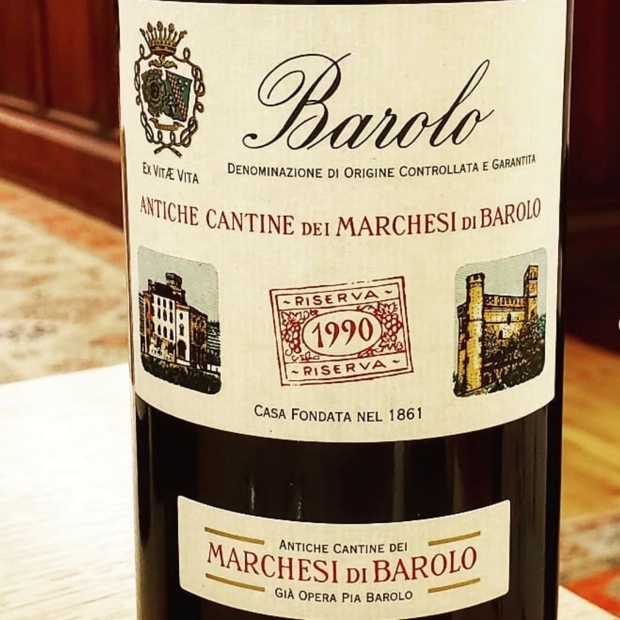
Unexpected late in the year taste of nearly 30 year-old nebbiolo was one of 19 in ’19 that blew my mind
Antiche Cantine Dei Marchesi Di Barolo 1990, Barolo Riserva, Piedmont, Italy
A grande dame or marchesa in the parlance of these woods, a nebbiolo of persistence, resilience and strength of character. Initiates contact with the past and a contract with tradition by way of the things that matter most. Family for one, roots dug into the earth second and the vineyard’s tongue, if it were able to speak. The overall gist in the parlance is heard and even understood although the dialect is hard to decipher if you are not of this place. This 1990 is found to be of high though level tempered energy and then with an ear, a nose and a soul so close to the earth. Smells like the soils amalgamated, preserved and demonstrated through the tempered liquor of a wise old 29 year-old nebbiolo. So much more than a piece of the past, this is an auguri gathering of storytelling, kin, culture and DNA. You must pay thanks for a chance to taste a thing such as this. Drink 2019-2033. Tasted December 2019
Good to go!
Godello
Twitter: @mgodello
Instagram: mgodello
